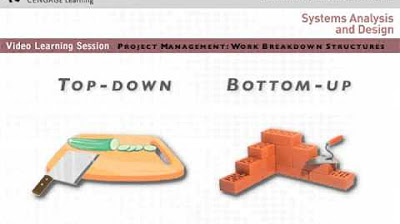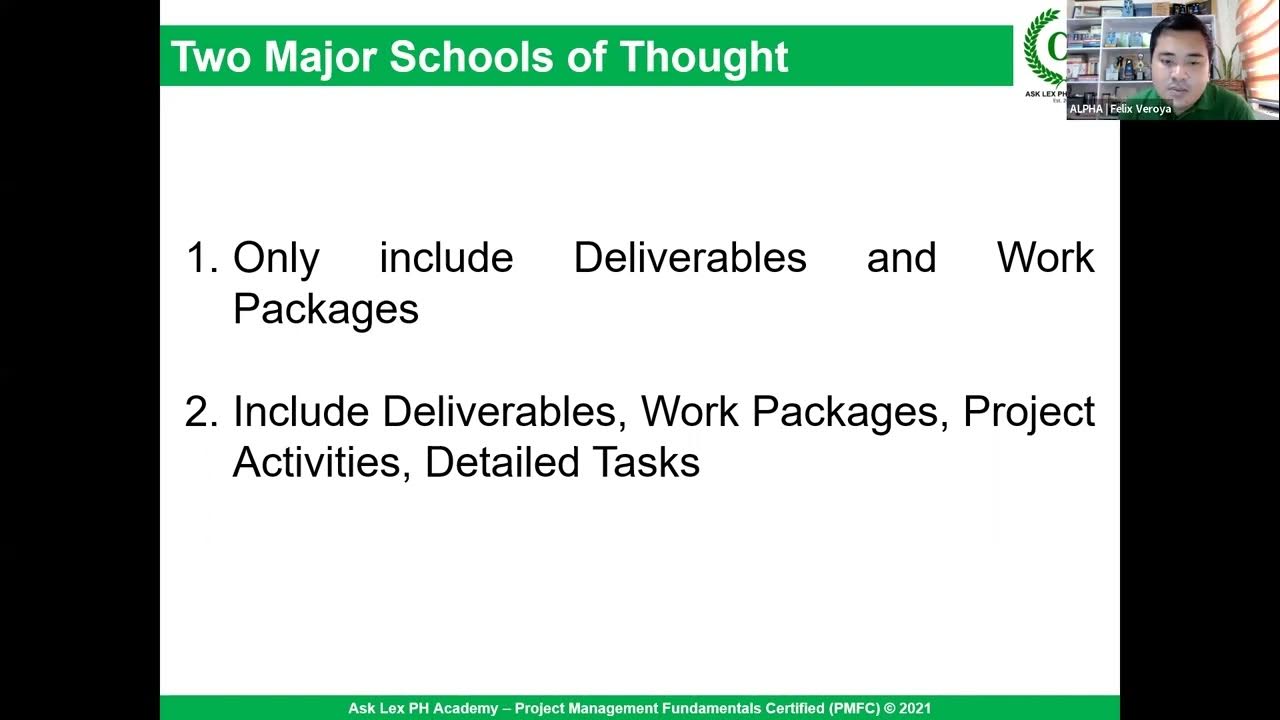Aula 07 - Estrutura Analítica do Projeto e Gerenciamento do Escopo
Summary
TLDRThis video script outlines the critical steps in project planning, focusing on creating a comprehensive Work Breakdown Structure (WBS) to define the project's scope. It highlights the importance of identifying and documenting both the necessary and excluded tasks to avoid risks of incomplete planning. The speaker emphasizes the need for expert opinions, benchmarking, and using historical data from past projects to inform decisions. Ultimately, thorough documentation and lessons learned are key to streamlining future projects and ensuring successful outcomes.
Takeaways
- 😀 Starting a project on the right foot is crucial for success, as it sets the tone for the entire process.
- 😀 Early stages of the project involve gathering high-level, preliminary information, which may still have uncertainties.
- 😀 The main objective of project planning is to clearly define both the final solution (what you want to achieve) and the process of how to achieve it.
- 😀 A Work Breakdown Structure (WBS) is essential for clearly defining the project scope, ensuring all necessary deliverables are included.
- 😀 A well-defined scope prevents the risk of missing key components, which can lead to incomplete or failed projects.
- 😀 Planning should break down the project into phases, such as planning, execution, and inauguration, each with specific tasks and goals.
- 😀 The risk of inadequate planning includes overlooked details, such as missing essential components like air conditioning installation in a renovation project.
- 😀 Specialized opinions and expert advice are invaluable when planning a project to ensure no essential tasks are missed.
- 😀 Historical data, past project templates, and lessons learned from previous projects are valuable tools for creating a comprehensive plan.
- 😀 Benchmarking successful projects and companies can provide key insights and help refine your project planning process.
- 😀 Documenting lessons learned from each project is important for continuous improvement and helps streamline future project planning.
Q & A
What is the main objective of project planning as described in the video?
-The main objective of project planning is to detail two things: the solution (the final result expected from the project) and how to build that solution (the steps and processes required to achieve the goal).
What is the significance of the Work Breakdown Structure (WBS) in project planning?
-The WBS is a hierarchical structure that outlines all the deliverables and tasks necessary to complete the project. It ensures that only the necessary work is included and helps define what is and isn’t part of the project scope.
What is the risk if you don't carefully define the project scope in the Work Breakdown Structure?
-The main risk is that important elements may be overlooked, leading to incomplete work. For example, if essential tasks like replacing electrical components are not included in the scope, the project may fail to meet its objectives.
How can one ensure that the WBS is complete and accurate?
-To ensure completeness, you can seek specialized opinions from experts, review historical project data, or use templates and checklists from previous similar projects. Consulting with experienced people or companies can help cover all necessary aspects.
Why is it important to distinguish what is inside and outside the project scope?
-It's crucial because defining what is included and what isn’t helps prevent scope creep—ensuring that the project stays on track and within budget and resources. It also clarifies roles and responsibilities.
What example does the speaker use to illustrate the importance of clear scope definition?
-The speaker uses the example of an office renovation project, where the goal is to increase capacity. If certain elements like electrical work are not properly scoped, the project could fail, even if the other tasks are completed.
What is the role of expert opinions in project planning, according to the video?
-Expert opinions are important because they bring specialized knowledge to the table, helping to ensure that all necessary components are included in the project plan. Consulting people with relevant experience can significantly improve planning quality.
How can you use 'lessons learned' from previous projects in new project planning?
-You can refer to the documentation of past projects, which includes insights about what worked well and what didn’t. This can guide decision-making in future projects, making the planning process faster and more efficient.
What advice does the speaker give regarding gathering information when planning a new project?
-The speaker advises asking people who have previously handled similar projects, consulting with specialized companies, and researching templates or historical data to gather the most relevant information for planning.
What is the concept of 'benchmarking' in project planning?
-Benchmarking involves observing and learning from companies or projects that are successfully executing similar tasks. It’s about identifying best practices and adapting them to improve your own project planning.
Outlines

This section is available to paid users only. Please upgrade to access this part.
Upgrade NowMindmap

This section is available to paid users only. Please upgrade to access this part.
Upgrade NowKeywords

This section is available to paid users only. Please upgrade to access this part.
Upgrade NowHighlights

This section is available to paid users only. Please upgrade to access this part.
Upgrade NowTranscripts

This section is available to paid users only. Please upgrade to access this part.
Upgrade Now5.0 / 5 (0 votes)





